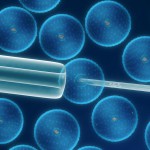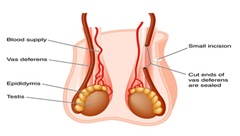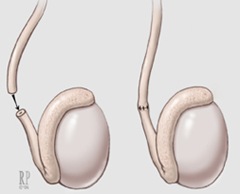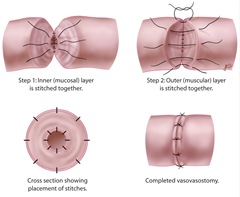Assisted Reproductive Technologies
Millions of couples with fertility problems have been able to conceive with the help of assisted reproductive techniques. These technologies require harvest of both sperm from the male partner and the eggs from the female partner to succeed. After collection, the sperm and egg are examined to ensure that they are healthy, and then, one of four techniques is utilized to fertilize the egg.
In Vitro Fertilization
When a couple decides to undergo in vitro fertilization, she typically takes hormones to stimulate production of eggs. After the eggs are harvested, they are placed in a Petri dish with sperm, and natural fertilization can then occur. After fertilization, between one and three healthy embryos are transplanted into the woman’s uterus, through the cervical os (opening).
Gamete Intrafallopian Transfer (GIFT)
This procedure mixes the sperm and eggs, which are then placed into the woman’s fallopian tubes, using a fiber-optic laparascope. The procedure is performed through small incisions in the low abdomen of the female partner, and it has a higher success rate than in vitro fertilization. However, it does require that the male partner has an adequate sperm count, and the woman must have normal fallopian tubes. The advantage of this procedure is that multiple eggs are not fertilized, so ethical concerns about transfer or creation of an embryo are avoided.
Zygote Intrafallopian Transfer (ZIFT)
A zygote is a fertilized egg, and in a ZIFT procedure, the fertilized eggs are placed directly into a woman’s fallopian tubes.
Intracytoplasmic Sperm Injection (ICSI)
This procedure relies upon fertilization of each egg with a sperm, after collection of both eggs and sperm. The fertilized egg is subsequently transferred to the uterus, as with IVF. The microscopic technique used in this procedure may render it more effective than IVF, but it is also more expensive.
Success Rates Associated With Assisted Reproduction Techniques
The CDC reports that in 2009, 37 percent of assisted reproduction technique procedures led to pregnancy, with 30 percent leading to a live birth.
Success Rates Associated With Vasectomy Reversal
Vasectomy reversal has a higher success rate than in vitro fertilization or assisted reproduction techniques. The rate of success for reversals is between 40 percent and seventy five percent, and it appears that the length of time since the vasectomy may correlate negatively with the success of a reversal.
If you have had a vasectomy, and now are considering a reversal in order to conceive your own genetic child, you should call Dr. Larish, New York’s leading vasectomy reversal doctor, for an evaluation today. Dr. Larish can advise you of the best available option to restore our fertility. Call 646-862-5500 to schedule a consultation.



